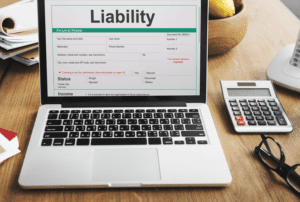
This can help you visualize how your chart of accounts translates into formal financial reporting. An account number is a unique string of numbers, letters, and other characters that identifies a specific financial account. Almost all financial transactions use account numbers, including processes for setting up direct deposits, paying with a check, and peer-to-peer bank transfers through mobile apps.

Chart of accounts numbering

To request only the accounts in a specified root or organizational unit (OU), use the ListAccountsForParent operation instead. Expenses refer to the costs you incur while running your business. This would include your office rent, utilities, and office supplies. In this account, you have purchased an item and agree to pay for it later. Let’s say you purchased candy and baskets from “Baskets and More” a vendor or company and agreed to pay later. PQR Enterprises is a firm engaged in the manufacturing of plastic containers.
How is a chart of accounts structured?
The chart of accounts is an organizational tool that provides a breakdown of all the financial transactions that a company conducted during a specific accounting period, broken down into subcategories. The main account types include Revenue, Expenses, Assets, Liabilities, and Equity. The chart of accounts separates out all the company’s most important accounts and makes it Financial Forecasting For Startups easy to figure out which transactions get recorded in which accounts. There are five main account type categories that all transactions can fall into on a standard COA.
Sample Chart of Accounts For a Large Corporation
On the other hand, organizing the chart with a higher level of detail from the beginning allows for more flexibility in categorizing financial transactions and more consistent historical comparisons over time. For standardization purposes, many industry associations publish recommended charts of accounts for their respective sectors. And even within the manufacturing line of business, a manufacturer in the aerospace sector will have a much different looking chart of accounts than one that produces computer hardware or even clothing apparel. In addition to the universal general accounts that are prevalent in most entities, each entity will include certain accounts that are particular to its industry sector. Nevertheless, the exact structure of the chart of accounts is the reflection on the individual needs of each entity. There are a few things that you should keep in mind when you are building a chart of accounts for your business.
01 Chart of Accounts
- This makes it easier to quickly identify the account and what type of account from the number.
- SWIFT codes are often used when initiating wire transfers from another country to the U.S. and from a U.S. bank to one in another country.
- We’ll also explore newer security tools that are beginning to replace account numbers because they reduce mistakes and fraud.
- If two banks merge or one bank acquires another, the applicable routing numbers may change.
- Generally a long term liability account containing the face amount, par amount, or maturity amount of the bonds issued by a company that are outstanding as of the balance sheet date.
Balance https://www.bookstime.com/ sheet accounts tend to follow a standard that lists the most liquid assets first. Revenue and expense accounts tend to follow the standard of first listing the items most closely related to the operations of the business. In some cases, part or all of the expense accounts simply are listed in alphabetical order. That part of the accounting system which contains the balance sheet and income statement accounts used for recording transactions.

The remaining two are income or revenue and expenses, which flow into the income statement. Some businesses also include capital and financial statement categories. Balance sheet accounts like what shows a list of all accounts and their account numbers? assets, liabilities, and shareholder’s equity are shown first, and then come income statement accounts like revenue and expenses, in the order they appear on your financial statements. You may also wish to break down your business’ COA according to product line, company division, or business function, depending on your unique needs. The COA will include balance sheet entries of assets, liabilities and owner’s equity, and income statement’s expenses and revenue.


Dashlane provides complete credential security, protecting businesses against the threat of human risk. Our intelligent Omnix™ platform unifies credential protection and password management, equipping security teams with proactive intelligence, real-time response, and protected access to secure every employee. Over 25,000 brands worldwide, including Michelin, Sephora, Air France, and Forrester, trust Dashlane for industry-leading innovations, patented zero-knowledge security, and an unmatched user experience. The average person in the U.S. has 100–150 accounts linked to their email address. Once you locate these lists and carefully review their contents, you can unlink any accounts you no longer need from the email account. To do this with any wmic command, you just have to add an /output switch along with a path for the file directly after the wmic command.
- Managing and maintaining your online accounts requires a systematic, step-by-step approach that begins with reviewing the accounts you’ve created over the years.
- In this account, you have purchased an item and agree to pay for it later.
- Some businesses also include capital and financial statement categories.
- A chart of accounts can help the company list all the costs recorded in its general ledger in one place.
- As you will see, the first digit might signify if the account is an asset, liability, etc.
One should check the appropriate tax regulations and generate a complete list of such required accounts. A current asset whose ending balance should report the cost of a merchandiser’s products awaiting to be sold. The inventory of a manufacturer should report the cost of its raw materials, work-in-process, and finished goods. The cost of inventory should include all costs necessary to acquire the items and to get them ready for sale.



